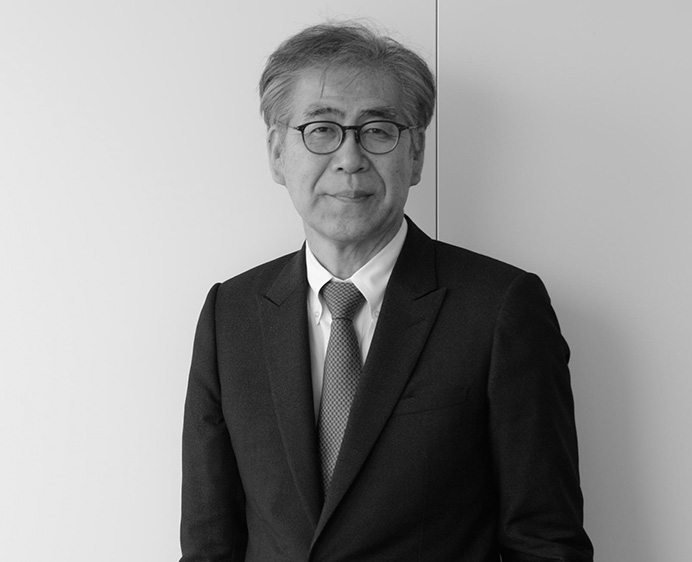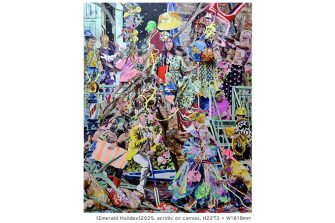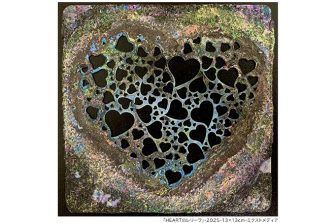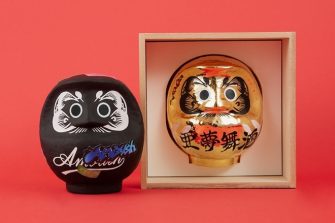
世界的な現代アーティストの作品と、商業空間の相乗効果を発揮 Commercial Space Meets Art in a Luxury Shopping Experience Unlike Any Other
ART
南條史生
GINZA SIXで展開するパブリックアート
銀座というのはやっぱり日本の顔、特に商業の顔じゃないかと思っています。そこにGINZA SIXという商業施設がオープンするというのは、日本の新しい顔ができるということ。しかも建築を谷口吉生さんが設計するとなれば「この国の最高のクリエーターたちが関わって、GINZA SIXを作りました」という姿勢が必要です。
そのときに打ち出すアートは奈良や京都に代表される伝統的な日本というより、まずはクリエイティブなイメージを持った新しい日本を感じさせるものではないかと思いました。GINZA SIXは建築もインテリアデザインも、日本というものを意識してはいますが、あくまでコンテンポラリーなテイストです。一方で、銀座は1960年代から現代美術を扱うところも含めて多数の貸し画廊が増えて、今ではギャラリーが集う街ともいえる。
そう考えたとき、GINZA SIXの中央の吹き抜けに展開するメインのアートは、世界の現代美術シーンで日本の顔になっている方の作品がふさわしいだろうと思い、草間彌生さんにお願いしました。新作を作ってもらい新鮮さを出しながら、日本らしさも感じさせるものにならないかなというのがこちらの思惑です。ちなみに、この吹き抜け部分のアートは不定期で入れ替えていく予定です。
商業とデザインは相性がいいですが、商業とアートはそれほどコラボレーションのチャンスがなかった。それに、あまりアートがとんがりすぎていると受け入れられない。でも、ある程度とんがっていなきゃアートをやる意味がない。なぜなら無難な作品になると、それこそデザインの一部に見えてしまいますよね。GINZA SIXではそうしたアートと商業空間のバランスと相乗効果にも注目してもらえたらと思います。
ちなみに「アート&ライフ——現代アートをより身近なものに」は森美術館のモットーでもあるのですが、私は生活の中にアートがあまねく行き渡るのが理想ではないかと思っています。アートが富裕層のためだけのものではなく、一般の人たちも気軽にアートを購入でき、それが日常生活の中にあるというイメージです。素敵ですよね。それこそが豊かな生活といえるのではないでしょうか。
そういう意味で、今回のGINZA SIXのように商業施設のなかにもアートがあって、なおかつアートがその施設の活動に貢献するのは理想的だと思います。さらにその施設の性格を象徴的に表していくような、アートならではのメッセージ性を演出できると、素晴らしいと思います。
Public Art at the Heart of GINZA SIX
It is my opinion that Ginza is the face of Japan—more specifically, the glitzy face of commerce and retail shopping culture. As such, the opening of a shopping mall like GINZA SIX is the unveiling of a new face for Japan to present to the world. All the more when you have someone of Yoshio Taniguchi's caliber designing your building. You start to realize the gravity of the undertaking: GINZA SIX is truly the result of the greatest creative voices in Japan coming together.
When it came to deciding on a direction for the art that would take center stage at this new landmark, I felt we should go for something that spoke to the creativity associated with modern-day Japan rather than the traditional Japanese aesthetic embodied by places like Nara and Kyoto. Of course, "Japan" was a conscious theme for GINZA SIX both in terms of the architecture and the interior design, but we've gone for a wholly contemporary look and feel. At the same time, we were also very aware that Ginza has become an art gallery hub of sorts, with the number of contemporary art dealers and rental gallery spaces steadily increasing since the 1960s.
All of this meant that the centerpiece that was to grace GINZA SIX's central atrium should be designed by someone who was the face of Japan in the international contemporary art scene—which is why I approached Yayoi Kusama for the job. By bringing her talents on board, I was confident that the result would be utterly fresh and inspiring while simultaneously retaining a uniquely Japanese essence. Incidentally, this atrium art piece is not intended to be permanent, and new centerpieces will be unveiled at irregular intervals.
The words "commercial" and "design" have gone well together; but the relationship between commercialism and art has always been much more contentious. The problem is, the more outrageous a work of art is, the less people get it. On the other hand, what is the point of art that isn't challenging on any level? The more you play it safe, the more obvious it becomes as a product of design. For GINZA SIX, I think we've succeeded in finding that great balance between art and a retail shopping space, where both feed into one another in a beautiful way. I'm excited for people to come and see for themselves.
Incidentally, the Mori Art Museum's motto is "Art + Life—Making contemporary art more accessible," and likewise I believe that art should be ubiquitous in our lives. Art should not just be for the wealthy. It should be readily accessible and affordable to everybody—a regular presence in all of our lives. Just imagine it. After all, isn't that what we mean when we talk about an "enriched society"?
In that regard, GINZA SIX is a prime example of how I believe a shopping mall should be: art at its core, serving as both the heart and the lifeblood that illuminates its environment. And if that art can encapsulate the personality of the facility, if it has a message to convey as only art can, it will take on a life of its own wonderfully.

銀座の街をめぐる記憶
1970年代、並木通りに「レンガ屋」という、当時最高と言われたフレンチレストランがありました。大学生の頃、その上階にある出版社の『トラベルタイムズ』という旅行雑誌の編集部で2年くらいアルバイトをしていました。社長がそのレンガ屋で食事をしながら、エアラインやホテルや旅行業界の外国人にインタビューをするんですが、僕はそこに同席してメモを取って、写真を撮って、通訳までしなくちゃいけなかった。それをしながら、フランス料理のフルコースを全部食べなきゃいけないわけで、振り返ると、すごいテクニックですよね(笑)。それが銀座の思い出。
一方、大学時代からの友人には銀座の老舗の旦那たちがいて、明治以降の東京の商人文化を担ってきた彼らは、銀座に今も誇りをもっていますよね。ブランドショップが居並ぶようになった今も「ここは俺たちの町だ」という想いをもっています。また先日、銀座のイベントに呼んでもらって話す機会があったとき、関係者から「銀座はもともと島だったんですよ」と聞かされました。1964年の東京オリンピックのために周りの運河を埋めてその上に高速道路を作る以前、今は地名でしか残っていない「数寄屋橋」「新橋」「京橋」などは、実際に銀座と外を結ぶ橋でした。
たった50年前までは島でもあった銀座。そんな土地の独自の記憶も決して埋もれさせてはいけないように感じています。
The Heritage of Ginza
Back in the 1970s, I spent a couple of years as a university student working part time on the editorial staff of a travel magazine called Travel Times. The publisher's offices were located up in a building along Namiki-dori [which runs parallel to Ginza's main shopping thoroughfare Chuo-dori], and below us was a French restaurant called Renga-ya, which at the time had established a reputation as Tokyo's pinnacle of fine dining. The CEO would interview foreign guests from the airline, hotel, and travel industries for the magazine over a meal there, and it would be my job to accompany him to take notes, photos, and even act as an interpreter—all in addition to scarfing down a full-course meal. In retrospect, I was quite the multitasker (laughs). That's one of my fondest memories of Ginza.
A number of friends from my university days have gone on to take over long-established, family-run Ginza shops—institutions, really. These are men who have been cultivating Tokyo's merchant culture for generations stretching back to the Meiji Period [1868-1912], and for them, Ginza remains the pride of Tokyo. Even now when high-fashion brand boutiques line the streets, they still consider Ginza their town. On a similar note, the other day I was invited to attend an event there, and I was speaking with one of the organizers, who explained to me that Ginza used to be an island. The areas we now call Sukiyabashi, Shinbashi, and Kyobashi—these names originally referred to bridges that connected Ginza to the mainland [bashi, or hashi, means "bridge" in Japanese]. The city filled in the surrounding canals and built an elevated highway in the lead-up to the 1964 Tokyo Olympics.
Ginza was an island just a half century ago. I feel that we have an obligation to keep this land's unique heritage alive.

GINZA SIXが掲げる「New Luxury」について思うこと
今の時代、ラグジュアリーというものが物ではなく、体験に変わってきています。僕の知り合いが数年前、お客様が持ち込んだギフトを室町時代から続く日本の伝統的な贈り物の作法「折形(おりがた)」で包むサービスを提供する『MIWA』という店を、パリにオープンしたんです。サンジェルマン・デプレの裏通りに暖簾が掲げられていて、小さな店内に入ると床の間があって、ヒノキの一枚板でできたカウンターがある。彼は、着物を着て出てきて抹茶を点ててくれるのですが、僕が訪れた時に客がいた試しはない。それでも続いている。
いったい、どうなっているのか聞いてみたら、ラグジュアリーブランドの企画に携わる人たちが「どう体験をデザインするか」について話を聞きたいと彼を訪ねて来る。それが仕事につながっている。
アートにも今後、物としてではなく、特別な体験を提供する役割が求められていくんじゃないかなと思います。
Thoughts on GINZA SIX's "New Luxury" Concept
These days when we talk about luxury, we refer less and less to material things and more and more to experiences. A few years ago an acquaintance of mine opened a shop in Paris called MIWA, which specializes in gift wrapping using a traditional Japanese method known as origata [where a single sheet of handmade paper is used with no scissors, tape, or glue] that has been practiced since the Muromachi Period [1336-1573]. It's a quaint little shop nestled on a side street in Saint-Germain-des-Prés, with a tokonoma [an alcove in a Japanese-style reception room for displaying a flower arrangement or other piece of art] by the entrance and a counter made up of a single slab of Japanese cypress. My acquaintance welcomes customers in a kimono and even prepares and serves them matcha [powdered green tea]. But the thing is, I've stopped by a number of times, and each time I never see anyone in there. Yet somehow he doesn't go out of business.
When I finally asked him how he was making ends meet, he told me that planners and strategists from various luxury brands come to him for advice on how to design customer experiences. He's essentially a consultant for hire.
That's just one example of how people are beginning to look to art not as an object to ponder over, but as something that provides a lasting experience.

南條史生
1949年東京生まれ。2006年11月に森美術館館長就任。国内外の芸術祭のコミッショナーやアーティスティック・ディレクター、キュレーターや審査員などを歴任。長年にわたり様々な大型のパブリックアート計画、コーポレートアート計画のディレクションを行う。
Fumio Nanjo
Born in Tokyo in 1949, Fumio Nanjo is an art critic, curator, and the Director of the Mori Art Museum, a position he has held since November 2006. He has served alternately as commissioner, artistic director, curator, judge, and in other capacities at art festivals throughout Japan and the world, and is known for his long, prolific career directing and supervising various major public art and corporate art projects.
(2016年9月インタビュー)
Interview and Text by Yuka Okada / Photographs by Satoko Imazu(Portrait), Toshiharu Kitajima(Architecture)










